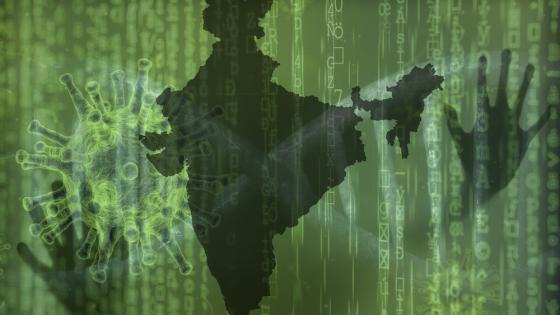On 24 March, the government of India ordered a nationwide lockdown for 21 days as a preventive measure against COVID-19. The lockdown restricts 1.3 billion people from leaving their home. Transport services are suspended. So are services, factories and educational institutions. The lockdown has generally met with approval from international institutions such as WHO, and is in line with what is deemed appropriate in economically advanced countries. For instance, Francis Collins, Director of the US National Institutes of Health, writes: “[W]hat we need most right now to slow the stealthy spread of this new coronavirus is a full implementation of social distancing” (Collins 2020).
The framing in these countries is ‘lives versus economics’, and by and large it is the right one. As Paul Krugman puts it (New York Times, 2 April), “most job losses are inevitable, indeed necessary … we’re going into the economic equivalent of a medically induced coma.” But the grim truth of Indian occupational structure and poverty highlights a shifted reality for poorer societies as they confront the pandemic: that a comprehensive lockdown is essentially a choice between lives and lives.
Specifically, given what we know of the epidemic, it is difficult to quarrel with the prescription of social distancing and lockdown, when accompanied by state measures that provide adequate economic protection. We defer entirely to this prescription. But what happens when the state is unable – for reasons of fiscal capacity, or information, or poor targeting, or the sheer lack of political will – to provide the necessary back-up welfare measures? Then lives are at stake with or without a lockdown, and pragmatic morality requires a reworking of the alternatives. Appropriate policy stances may depend on precise epidemiological features (are we speaking of a high fatality-low infection regime or a low fatality-high infection regime?), on the society under stress (is it relatively affluent or relatively deprived?), and on the consequent distribution of lives lost under a prolonged lockdown (demarcated by economic status from the loss of livelihoods, or demarcated by age from the spread of the disease?).
This is the quandary we explored in more detail in a new CEPR Policy Insight (Ray et al. 2020). We describe several features of Indian society that make for difficult choices. First, over 20% of all households make their major living from casual occupations, and so are particularly fragile in their ability to cope with an indefinitely imposed economic lockdown. Second, and related, well over half of India’s GDP is produced in the ‘informal sector’ where transactions are largely outside the fiscal reach of the government. These sectors cannot switch overnight to an online economic existence, though it is possible that some fraction will have reciprocal long-term relationships with better-placed Indian households. Third, the estimates of savings that we do have suggest that liquid (or even illiquid) assets alone will not suffice for a three-week lockdown.
We then discuss the limited reach of policy. Some of the features just described make it hard for the government to provide directed (or targeted) transfers to the vulnerable. One can move away from this low-information benchmark in two different directions. There is the possibility of universal transfers, a policy that gives up on targeting altogether. Such a policy is not infeasible, but it is necessarily expensive and inefficient. Or one can rely on transfers that exist under ‘self-targeted’ programmes, such as the National Rural Employment Guarantee Scheme. It is unclear that the recently announced relief package of roughly $24 billion comes anywhere close to the quantum of what is needed, or that informational constraints will be fully understood and respected in the implementation of that package. So there are questions of both willingness and competence characterising state intervention.
It is imperative, in this time of crisis, to (a) pursue policies that are feasible; (b) avoid draconian measures which many citizens cannot afford; (c) avoid criminalising individual actions triggered by the need for survival; and to (d) communicate state intent in credible, unambiguous, and specific terms. Faced with these constraints, we submit the following proposal for critical evaluation. Like every alternative, this proposal has its limitations (see especially the discussion surrounding item 1 below).
1. All available data suggest that the death rate from COVID-19 for people between 20-40 is comparable to, or lower than, the overall death rate for all ages from influenza. With qualifications, one could argue that if it is acceptable for people of all ages to move around freely in the presence of influenza, it should be acceptable to allow (not force) all adults under 40 in India to work freely at the present time.
2. This measure can – and must – be supplemented by antibody testing as such testing becomes widely available, and as antibody stocks in the population build up. It is imperative that everyone certified under an antibody test should be permitted to work as well.
3. Later, as the infection rate subsides, new measures can be taken to move ‘up the age distribution’ for work permits.
4. Protection of the elderly and the very young must be left (though not entirely) to households, who will possess the incentives and motivation to provide for and monitor such protections. As indicated in the previous sentence, this is very far from negating the role that public support can play here. It is crucially important for the state to provide facilities for visiting, testing, isolating and treating older patients.
What is involved is a form of self-selection: people who can afford the luxury of staying at home will do so, while those that cannot will opt to go to work. As with many self-targeted outcomes, this one too is unfortunately mediated by the inherently inequitable prospects confronting our citizens: the labouring poor will exercise the option of working, while those with more secure fallback options will stay at home. But at least the poor will not be confronted with the involuntary contingencies of life-threatening economic shortfall.
The advantages of this proposal are clear: it allows most Indian families to keep a lifeline open, and in so doing, it suggests a measure that is (relatively) equitable and balanced across income groups. It shifts the demands of social responsibility from a policy that relies on high-mindedness and concern across households to one that relies on altruism and care within households, which is always a good thing except in the eyes of the most utopian optimist. Finally, it is also worth remembering that India is a young country – just 5.1% of her population is 65 or older.
We highlight two points of vulnerability on which an evaluation of this proposal must rest.
1. Will the elderly will be adequately protected? It is true that our proposal gets older individuals out of the direct workforce, and it asks for protective measures primarily within the family, supplemented by state assistance across families. But motivation and incentives are one thing, and household capacity is another. And yet, intergenerational contact cannot be fully avoided under any policy. While no measure is ideal, ours relies on the self-interest of households rather than a generalized notion of the social good.
2. Won’t this measure increase the overall incidence of, and deaths from, COVID-19? Alas, it will. If disease minimisation is our objective, then the solution is a complete lockdown, even in the absence of state compensation. But, must we neglect the immense burden – in terms of human lives and suffering – that a comprehensive lockdown must place on the majority of the Indian population?
This last query leads to a closing thought. The debate of ‘lockdown versus economy’ assumes very different political hues in economically advanced countries and in India. In the United States, for instance, we support a lockdown without hesitation. The SARS-CoV-2 virus is contagious – far more so than the flu – and even if individual mortality risk could be comparable across COVID and flu (conditional on being infected, that is), the overall strain on the health system is enormous. It is true that the economic effects are also large – certainly so in a high-inequality, restricted-social-net country like the United States – but at least, in that country, one has capacities needed to make people whole: starvation is not first-order. In India, it is first-order.
References
Collins, F Dr (2020), "To beat Covid-19, Social Distancing is a Must", 2020, NIH Director’s Blog, 19 March.
Ray, D, S Subramanian and L Vandewalle (2020), “India’s Lockdown”, CEPR Policy Insight No. 102.






